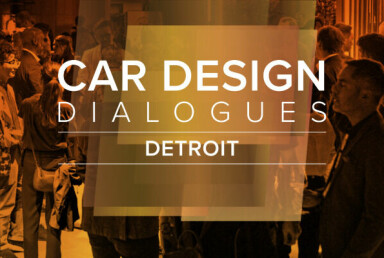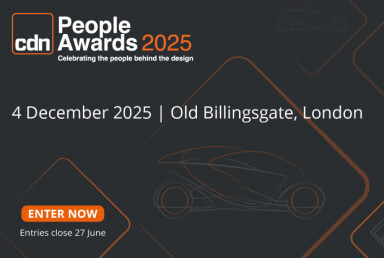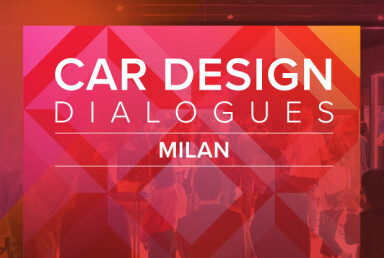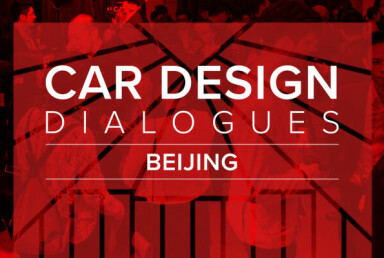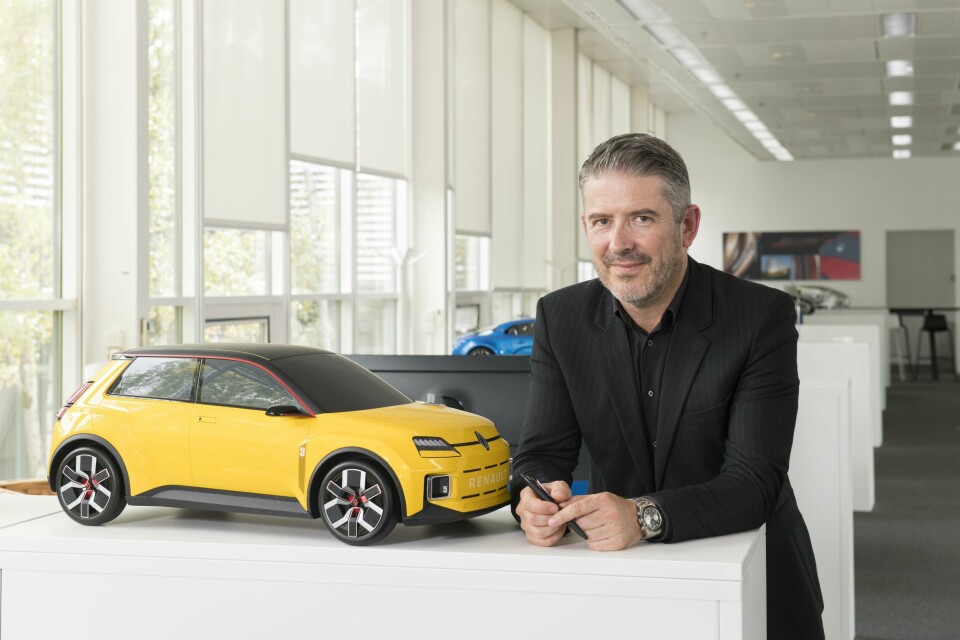
Car Design Review 9: Gilles Vidal, Renault
“You need to find that special something to stand out from the crowd”
I have lived my entire life around cars. My father, grandfather and uncle were all car dealers, and my grandfather kept a collection of classics in his barn, including a Citroen Trefle and Traction Avant, an Opel GT, a Peugeot 404 and even an Opel Cadet from 1939. I remember sneaking in with my little brother – we were just small enough to crawl underneath those massive sliding doors – and I felt like Indiana Jones. My father also drew cars as a hobby. I remember seeing huge hand-drawn illustrations at the dealership. You can imagine how influential all this was, and having been originally interested in graphic design, little by little, car design got me.
When I first entered the industry there was not much computer-aided design (CAD) and plenty of clay and plaster modelling. Things have changed over the years and the toolbox at our disposal continues to grow. We have amazing virtual reality (VR) and augmented reality (AR) headsets and super-skilled digital modellers, but it’s about knowing how and when to use each tool. In my opinion, a physical model raises the level of creativity and expands the possibilities to create something amazing. If everyone switched to CAD-only, in 20 years’ time all cars would become boring and the spectrum of possibilities would shrink. It’s a real danger – cars would miss the magic, the spark, that physical modelling can bring.
At Renault, we have invented silhouettes with amazing aesthetics over the years, but also vehicles that make sense for people
The discipline of a designer is not just about aesthetics but to improve the quality of life for society. Cars should not just be more beautiful, more modern or more outrageous. As such, user experience and user interface (UX/UI) design has become a huge element of car design, but even just 15 years ago that notion didn’t exist in the car world. You bought a screen with a few embedded functions and stuck it in the interior, end of story. Car brands cannot just make good products anymore – although making good products is already hard enough. Designers must deliver an improved user experience, and that concerns everything from tactile materials to how it looks and how it performs. UX is tricky and can become super-complicated, particularly in terms of making it intuitive.
Today, the mainstream car brands can do it all – they have beautiful designs, the best technology, the best user experience. This means you need to find that special something to stand out from the crowd. At Renault, we have invented silhouettes with amazing aesthetics over the years, but also vehicles that make sense for people and are not just aesthetic statements. Consider the Espace, the Twingo or the Scenic, which were iconic in terms of how they could be utilised.

We must also consider that a car does not launch immediately but perhaps in four years’ time. By then, a lot of crazy designers will have done some amazing things. Look at the latest work coming out from Kia and Hyundai, for example. These designs are daring and are already here today. Renault must remain a hyper-creative brand, just as it always has been, and dare to do things that have never been seen before. The future of electric mobility doesn’t have to be so dry, clinical and white. It can be more fun and more wild. After all, why not?
We must push the envelope, but with control. Designs should be super-advanced but not weird – and there is a very fine line. Designers should present ideas that scare the rest of the company because if everyone is comfortable, that’s a bad sign. The car will be dated before it ever launches. There is refinement and careful consideration, but it often comes down to a gut feeling – you know what’s right or wrong. But it is dangerous to be a design boss if you think you’re always right. That’s why we have an amazing team here at the Technocentre in Paris.
In some respects, creativity is about controlled chaos
We are in constant discussion about where we are headed, sharing different points of view and a mix of creative visions. We want super creative individuals but, for me, mindset is more important than raw talent. We want a family spirit that creates an amazing atmosphere in the studio. The standard was already very high before I joined, but I decided to bring in a bunch of crazy art designers, people who dare to do the unexpected and are always looking forward. They understand how the car should transcend what is coming next. Crucially, designers should be able to translate that creativity into an efficiently-manufactured product – it can’t be a sketch that will never be doable. In some respects, creativity is about controlled chaos.
As an established manufacturer with an amazing studio, we know we are attractive to the next generation of designers coming through, and Paris is certainly an exciting place to be. At Technocentre, we have more than 100 creatives across all design fields and brands. It is a huge facility – we have five restaurants and even a hairdresser – so is more like a little city than a studio. Looking ahead, the talent war is still going on to some degree. Ten years ago there were too many young designers for the carmakers to handle and many didn’t find a place in the car industry.
But with all the start-ups and new brands coming out, that’s changing. A new studio needs 50 people in one go, and so demand for talented designers has grown. At the main design schools, everyone will fight for the top three designers from that year. It’s not as bad as with professional football players, but we are super-careful about managing this talent war and always have a new wave of designers ready to go.
